Story Mountain Explained With Examples + Free Templates
Need help planning a story? A story mountain is a brilliant tool for helping new writers understand story structure and plotting.
Behind every great story is a mountain metaphor. You start off on the safe, steady ground. As you make your way up the mountain, you face many conflicts and obstacles. At the highest point, you stand proud knowing you faced the odds. Finally, you come back down, conflicts resolved, as you reach safety again at the bottom of the mountain.
You might also be interested in the snowflake method or the three-act structure for outlining story ideas.
In this post, we’ll explain everything you need to know about the story mountain technique, along with free templates to get you started!
What is a Story Mountain?
The story mountain is a technique for outlining story ideas. It’s especially useful for children and new writers, as it illustrates the key elements of stories visually. Just like a real mountain, a story mountain illustrates the ups and downs of a story. Its key elements include the beginning, build-up, problem, resolution and ending.
It starts off on the steady ground, as the story begins. As you go up the mountain, you face many challenges and obstacles building up to the big climax or conflict of the story. Then you come down the mountain, everything settles off. Finally, you end on the steady flat ground.
There are many variations of the story mountain technique. Some are very simple, while others are detailed and complex. The simplest template contains just three elements: Beginning, Middle and Ending. While the most complex mountain we’ve seen includes seven elements: Characters, Setting, Beginning, Build-up, Problem, Falling Action and Ending. And of course, you could even break these elements down even further to create an even more detailed outline for your novel or story idea.
In the next section, we’ll explain the different versions of the story mountain with examples.
The 3 Part Mountain
In its simplest form, the story mountain just needs three elements: Beginning, Middle and Ending. Each element has been explained below:
- Beginning: What will happen at the start of the story? Where is it set? Who are the characters?
- Middle: What is the major event in this story? How does this event happen? What problem/s will the characters face? How are these problem/s created?
- Ending: How will the story end? What choices will the main character make? How will the problem/s be solved? Are there any lessons to be learnt?
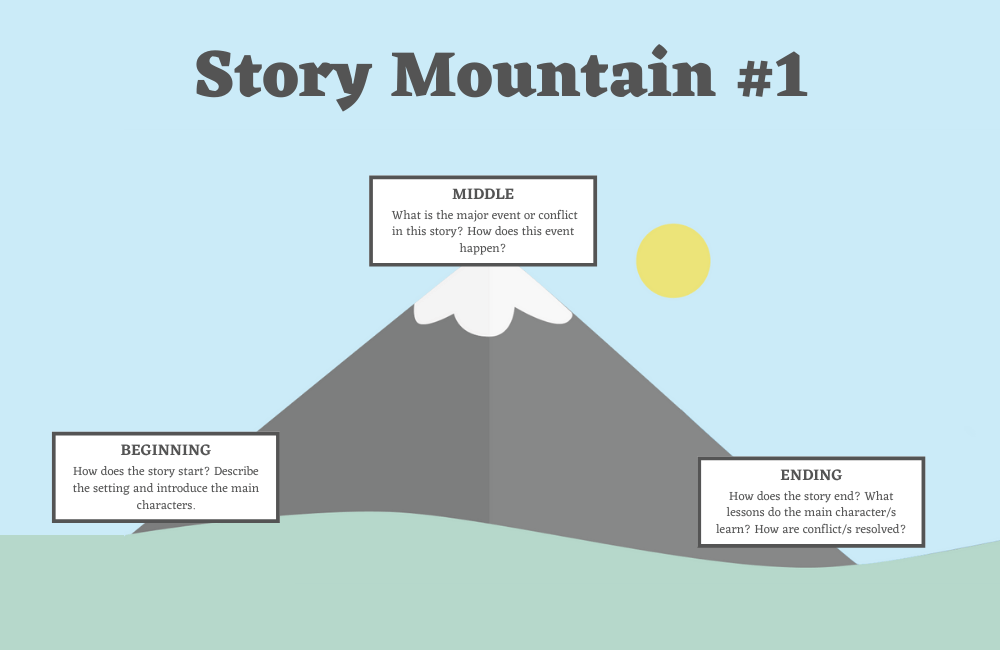
Below is an example of a completed template using the story of Little Red Riding Hood:
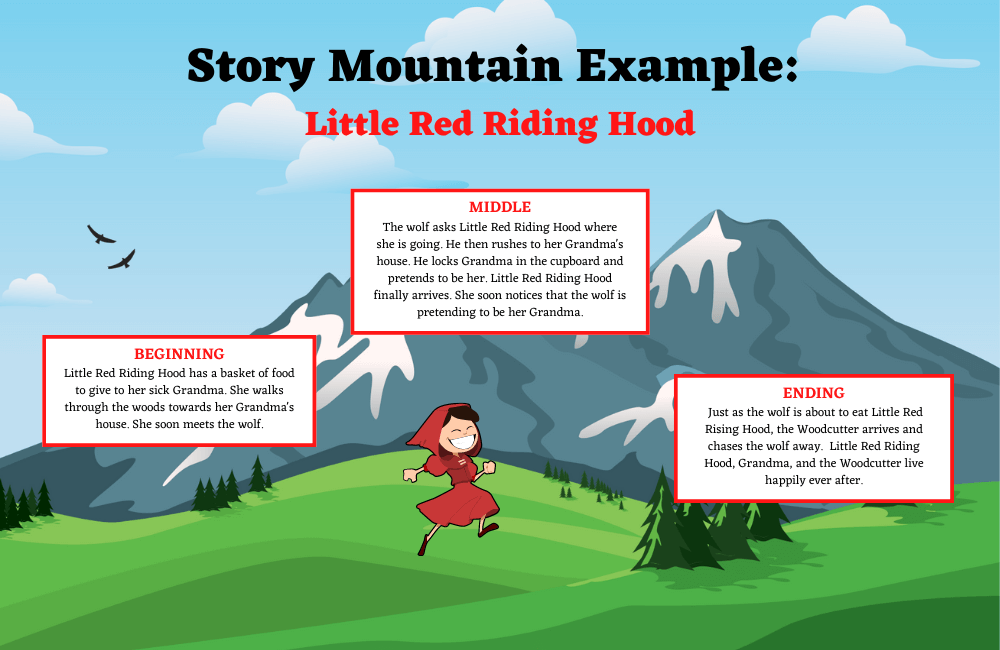
The 4 Part Mountain
The story mountain can also be divided into 4 parts: Beginning, Middle, Falling Action and Ending:
- Beginning / Rising Action: How does the story begin? Introduce the characters and settings. How is the conflict or problem created?
- Middle / Climax: The main character/s must face the conflict. How will they resolve it?
- Falling Action: Explain what happens after the conflict.
- Ending: How does the story end? What lessons do the characters learn?
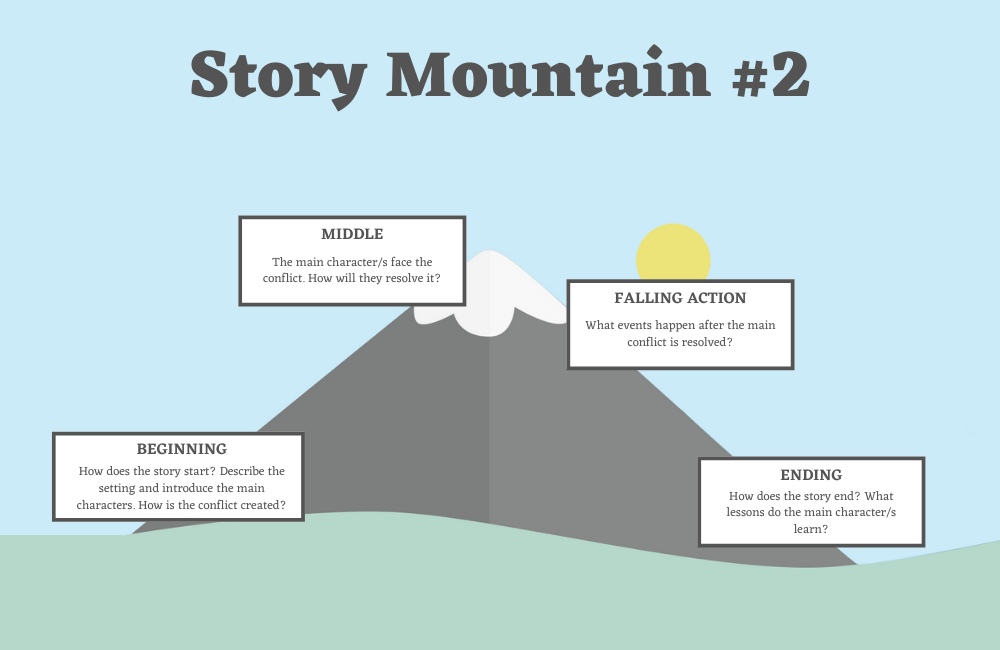
Example of Little Red Riding Hood using the 4 part template:
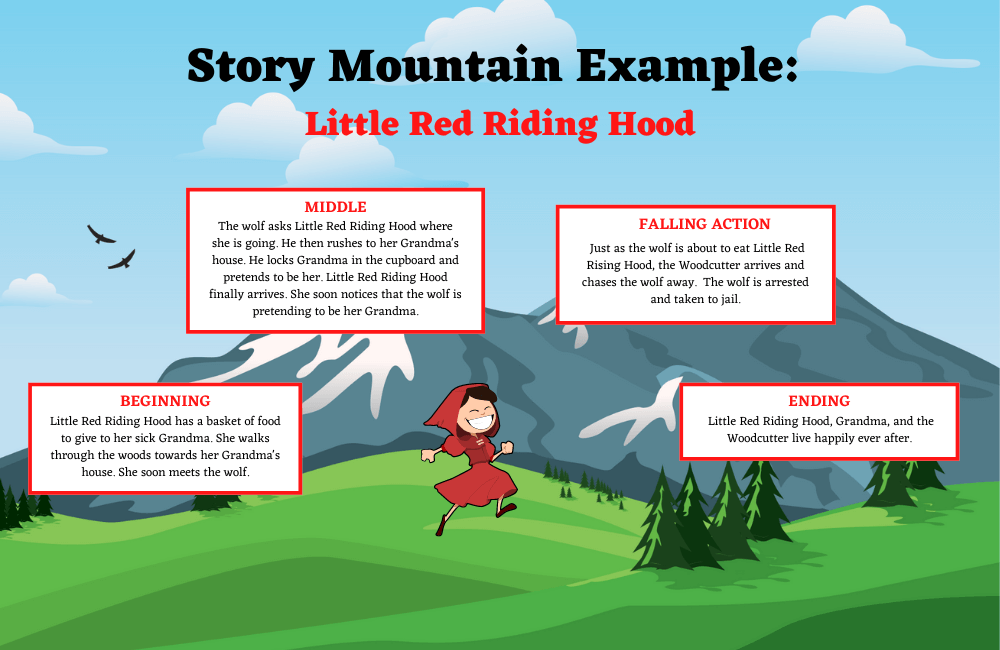
The 5 Part Mountain
The most common type of story mountain template contains five elements: Beginning, Build-Up, Problem, Falling Action and Ending:
- Beginning: How does the story begin? Describe the setting and introduce the characters.
- Build-Up: This is also known as the rising actions. What events will happen before the major conflict takes place?
- Problem: The problem or climax is where the major conflict actually happens.
- Falling Action: Also known as the resolution. Describe how the main conflict is resolved. What happens after the conflict?
- Ending: How does the story end? What lessons do the characters learn?
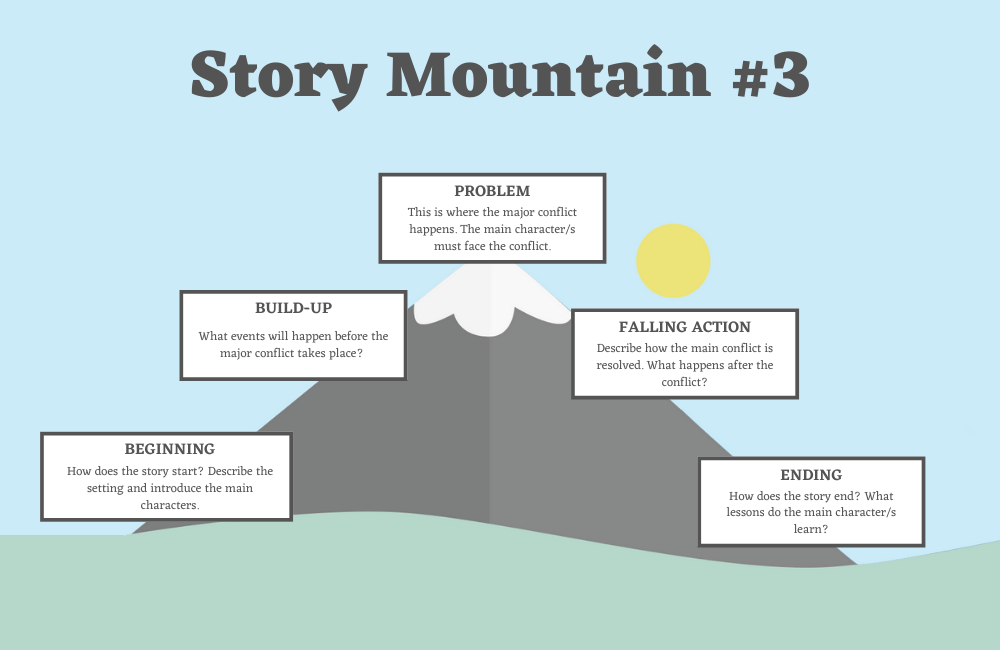
Example of the five-element mountain using Little Red Riding Hood:
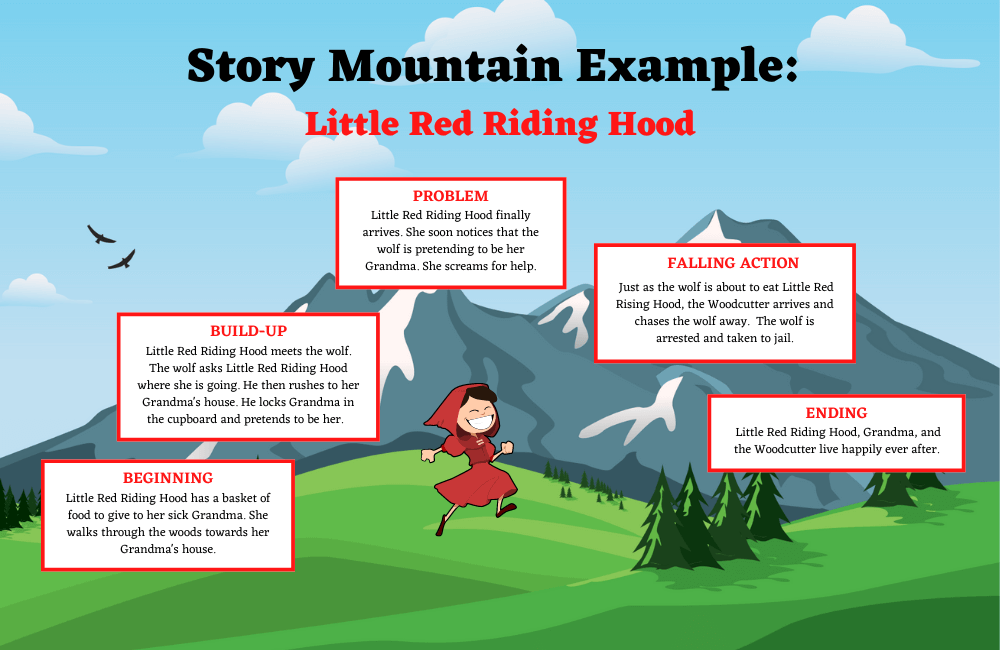
6 Parts of a Story Mountain
The six main parts of the story mountain include Beginning, Unexpected Event, Build-Up, Problem, Falling Action, and Ending:
- Beginning: How does the story start? Introduce the main characters and describe the setting.
- Unexpected Event: Think about how the major conflict is created, and why? In other words, what event happens to cause the conflict?
- Build-Up: What events happen before the major conflict?
- Problem: This is where the major conflict happens. The main character/s must face the conflict.
- Falling Action: How is the conflict resolved? What happens after the conflict is resolved?
- Ending: How does the story end?
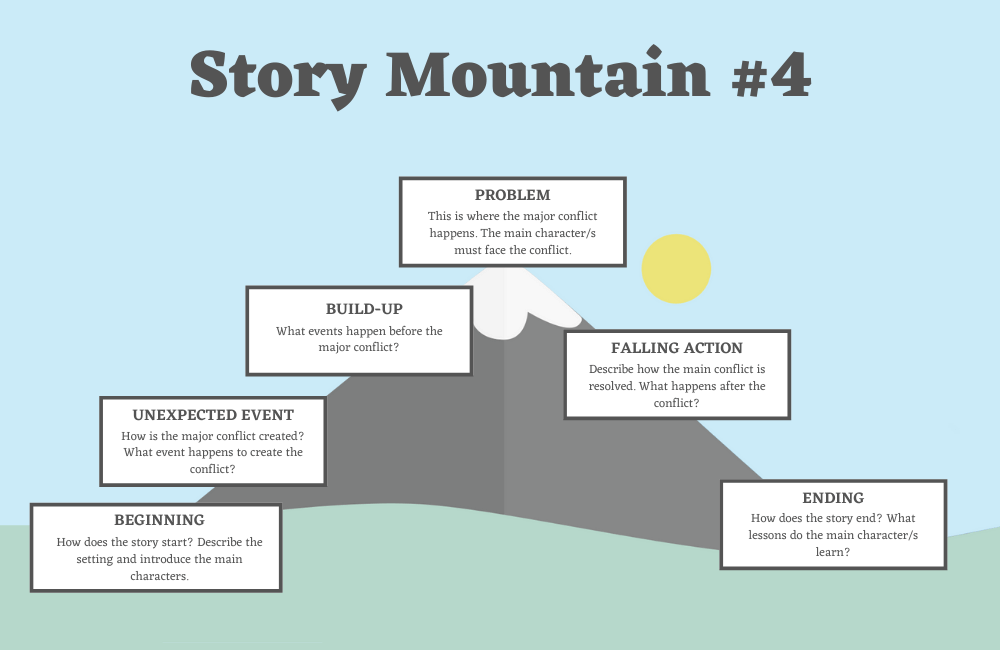
Six-part example using the Little Red Riding Hood story:
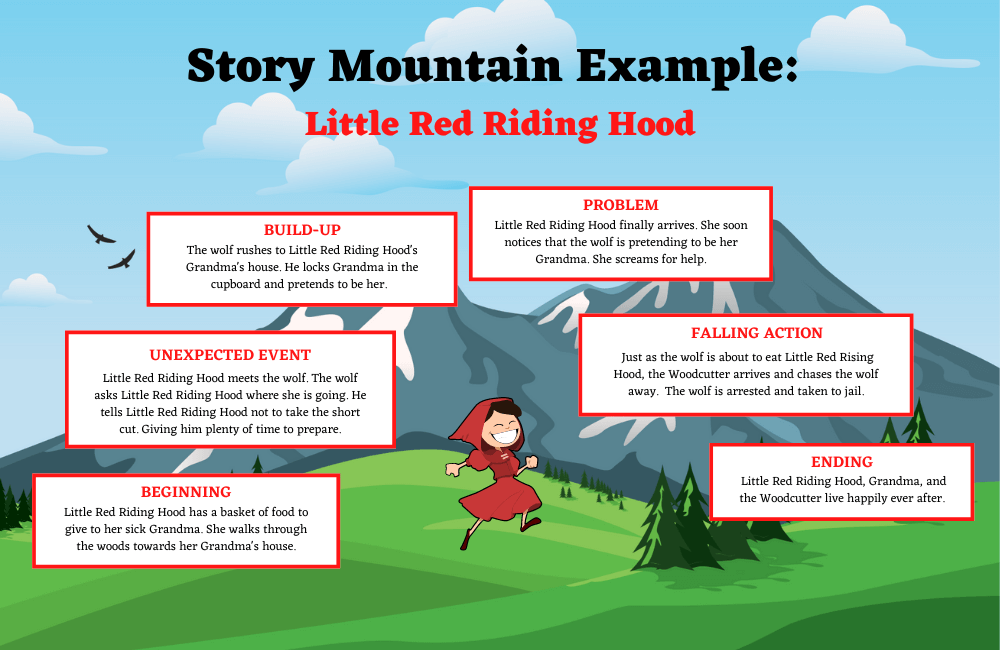
7 Part Mountain
Some story mountain templates have seven elements included: Characters, Setting, Beginning, Build-up, Problem, Falling Action and Ending.
- Characters: List and describe the main characters in the story.
- Setting: Describe the main setting of the story. Think about the time period, mood and even location of the story.
- Beginning: How does the story begin?
- Build-up: What events take place before the main conflict?
- Problem: Describe the main conflict? How do the main character’s deal with this conflict?
- Falling Action: What events happen after the conflict is resolved?
- Ending: How does the story end?
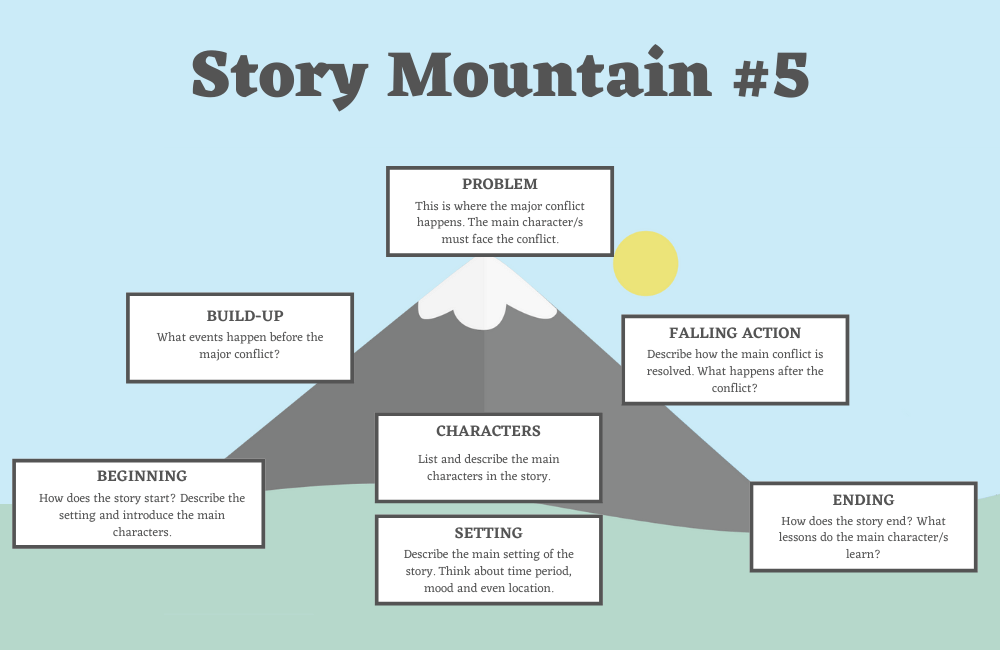
The seven-element template example using the tale of Little Red Riding Hood:
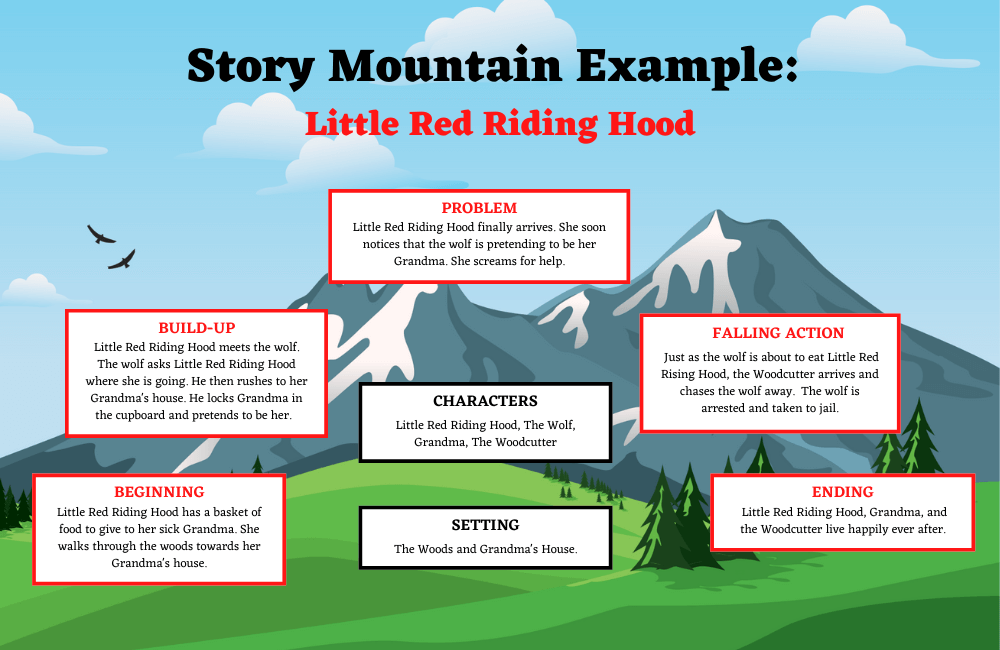
Extended Story Mountain
The mountain template can be extended to outline complex story ideas with multiple conflicts. For example, for a story with two major conflicts, the mountain would go up, down, up again and then finally down. The key elements could be adapted to the following seven elements:
- Beginning: What happens at the start of your story?
- Build-Up: What events happen before the first major conflict?
- First Problem: How do the main character/s deal with the first conflict or problem?
- Falling Action: What events happen after the first conflict is resolved?
- Second Problem: The main character/s face another conflict. How do they deal with this second major conflict?
- Falling Action: What events happen after the second conflict is resolved?
- Ending: How does the story end? What lessons are learned?
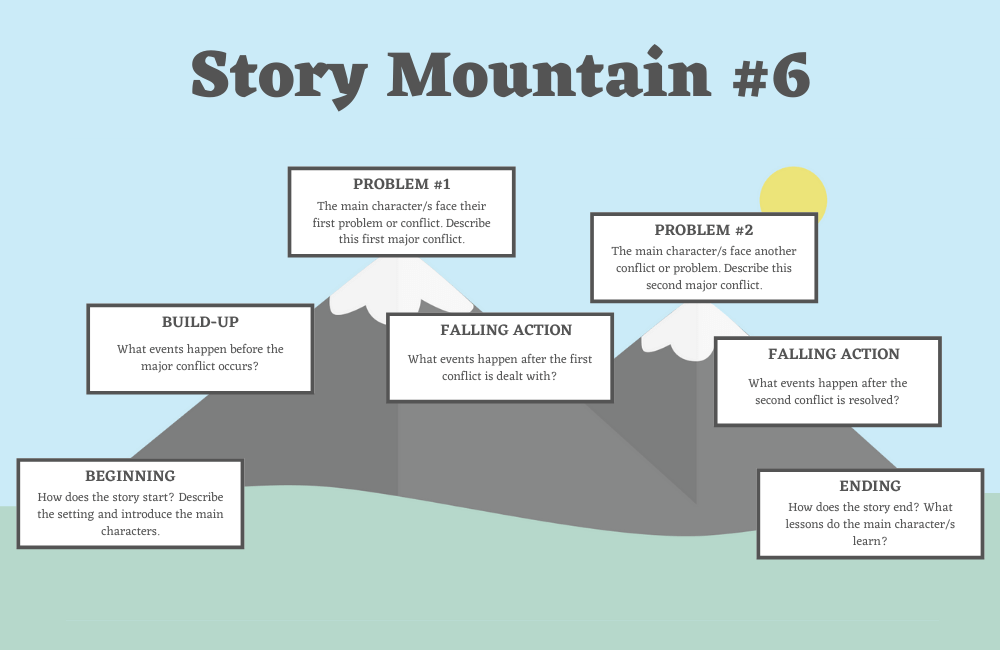
Example of the extended technique using Little Red Riding Hood:
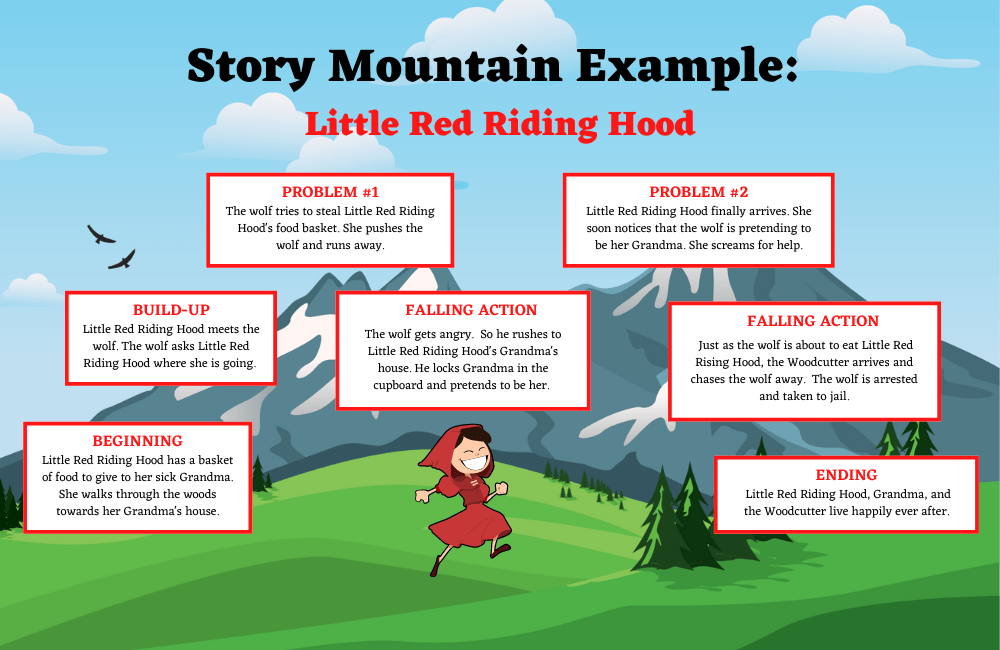
How to Teach The Story Mountain
The story mountain is one of the earliest outlining techniques used in classrooms between KS1 to KS3 or grades 1 to middle school. Compared to other plot outline techniques, this technique is not only visually appealing but simple enough for early writers to understand. There is a number of ways to teach the story mountain in classrooms, such as:
- Complete a blank template based on the student’s favourite book.
- Have a whole-class discussion on how to complete the story mountain together for a popular story or movie.
- Working in small groups to complete a blank template for a popular movie or book.
- Using the student’s own story idea, use the template to plan this idea in more detail.
- Provide a list of scenes from a popular book or movie. Together as a class or in small groups, put the scenes in the correct place on a blank template.
When it comes to teaching the story mountain to students, we recommend you use a worksheet or template. Print one blank template for each student in your class. Along with the blank template, include a completed example that students can reference when completing their own blank template.
Your next task as a teacher is to explain each element of the template, along with examples. First start with the beginning, explain this element and then give your students around 10 minutes to complete this section. Then move on to explaining the next element, and give your students another 10 minutes to complete that section. Keep going until all the sections are complete.
As homework, you could give your students another blank template to complete for a book they recently read in class or even a movie they recently watched. Using their favourite book or movie as an example is a great way to engage reluctant writers into completing the task. It also helps them grasp the concepts of the story outlining process, as they’ll be able to visually see how their favourite book or movie is broken down.
An extra tip here is to tell the students to write down a list of key scenes from the book or movie first. The students can then pick at least one scene for each element of the story mountain. And then finally they can plot these scenes on the mountain in the correct order.
Free Story Mountain Templates
Now that you know how to use the story mountain template, it’s time to practice this technique yourself! You can download the different versions of the template below. Each template includes a completed example and a blank story mountain template:
- 3 Part Mountain Template
- 4 Part Mountain Template
- 5 Part Mountain Template
- 6 Part Mountain Template
- 7 Part Moutain Template
- Extended Story Mountain Template

Did you find this post on the story mountain technique useful? Let us know in the comments below.
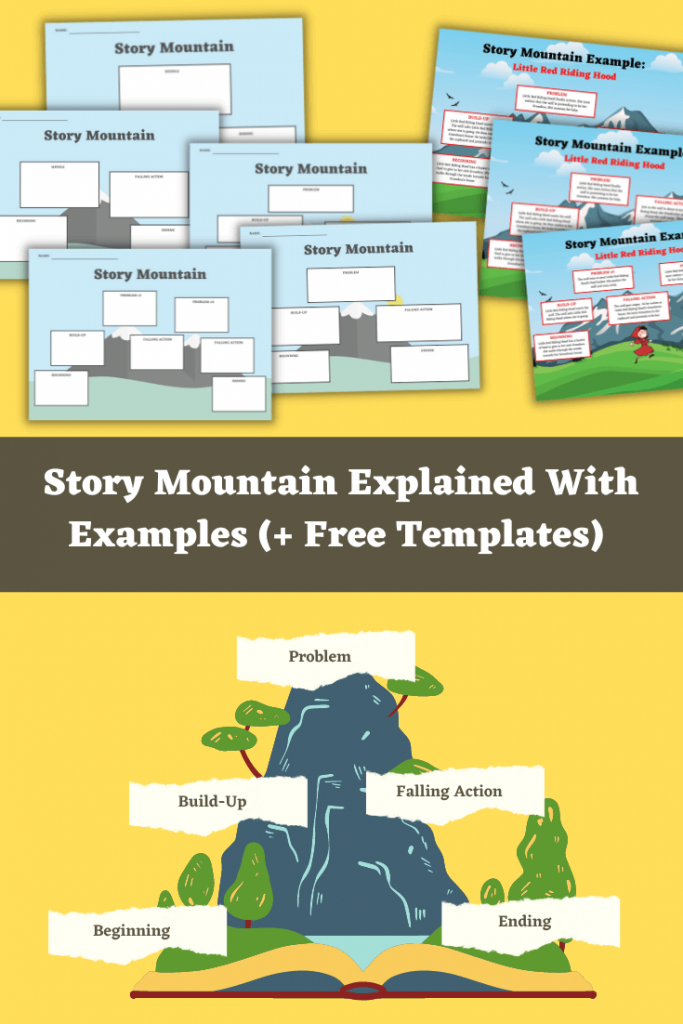


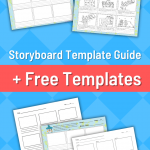

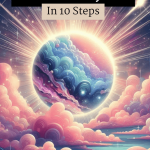
Comments loading...